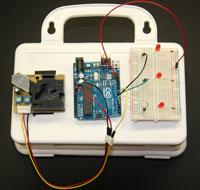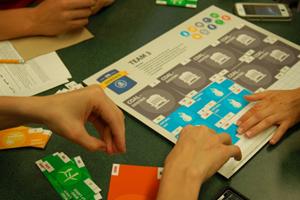Air Quality and Energy Choice STEM Activities for Educators
EPA researchers participate in educational outreach to schools, museums, and other locations to teach students about air quality and climate change research that EPA and partners conduct to protect the air we breathe and provide the knowledge and scientific tools to respond to a changing climate. As part of the outreach, researchers have developed several hands-on activities for teachers and others to use in the classroom and other educational settings.

Particulate Matter (PM) Air Sensor Kits
Particle pollution, known as particulate matter (PM), is one of the major air pollutants regulated by EPA to protect public health and the environment. A PM air sensor kit has been developed by EPA researchers as an educational tool to teach children about air quality and air science.
- Instructions for buying the parts and building your own particle sensor
- A 10-minute activity that includes information on air pollution and explanation of how the PM air sensor works
- Discussion questions to ask students after the lesson
- Classroom handout
- Build Your Own Particle Sensor
Educators at Massachusetts Institute of Technology (MIT) created a set of instructions for a build-your-own particle sensor inspired by EPA's air sensor kit. The lesson introduces middle school students to engineering and air quality concepts. This project was supported through an EPA STAR grant led by MIT and local community partner The Kohala Center to monitor emissions from Hawai’i’s Kīlauea volcano. To learn more about the project, read this story in EPA's Science Matters newsletter.
The instructions for building the MIT Edgerton Center’s particle sensor kits are hereEXIT and can be reposted with attribution. Find the Creative Commons license hereEXIT.

Generate Game
An interactive board game developed by EPA scientists called Generate: The Game of Energy Choices enables players to explore energy choices and the environment and gets students “energized” in some friendly competition. The game is a teaching tool that can be used to understand the costs and benefits of the energy choices we make; find out what happens if the mix of energy sources changes in the future and learn what energy choices mean for our climate, air, water, and overall environmental quality.
Make your own Generate Game
- Click here to access the printable Generate Game and instruction manual.
- Editable companion Excel file for quickly calculating team scores and showing team rankings for multiple rounds. (138 K) - Technical contact for questions using this file, email Rebecca Dodder (dodder.rebecca@epa.gov).
